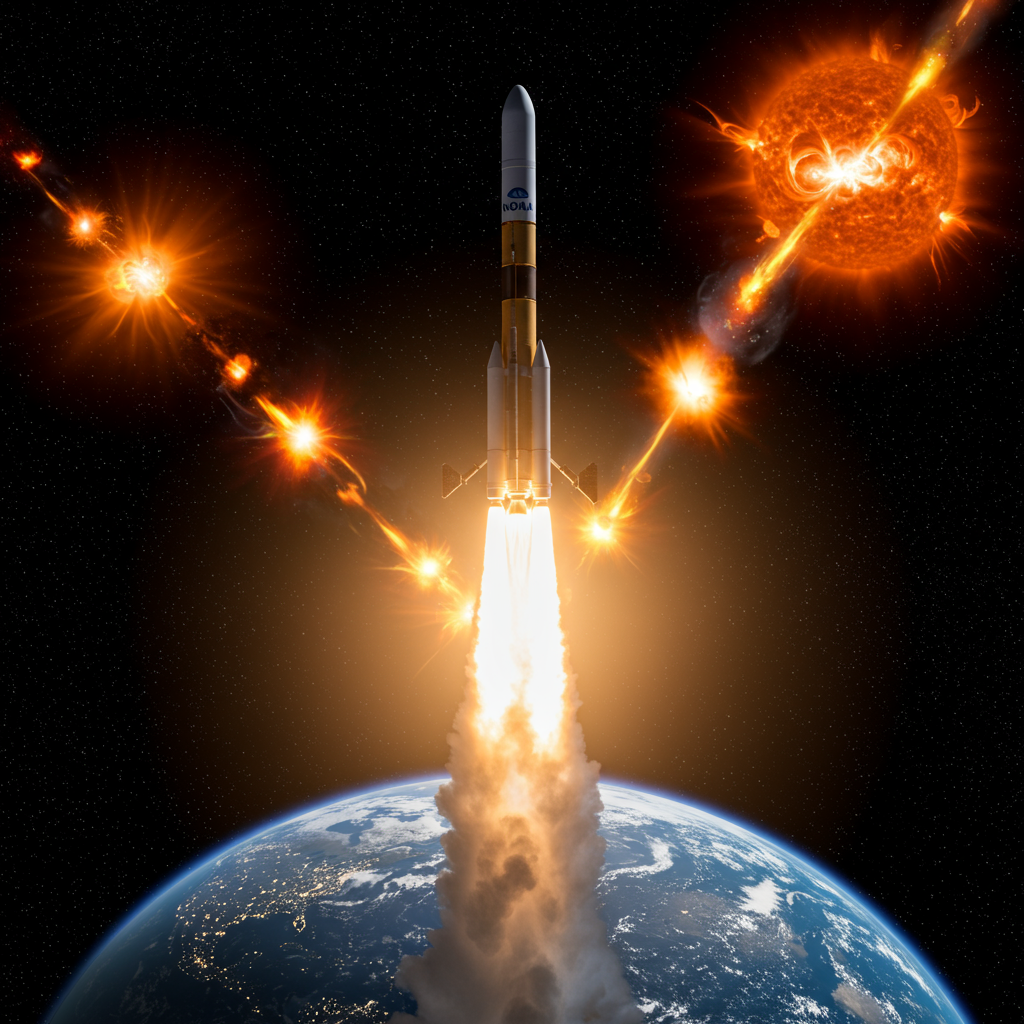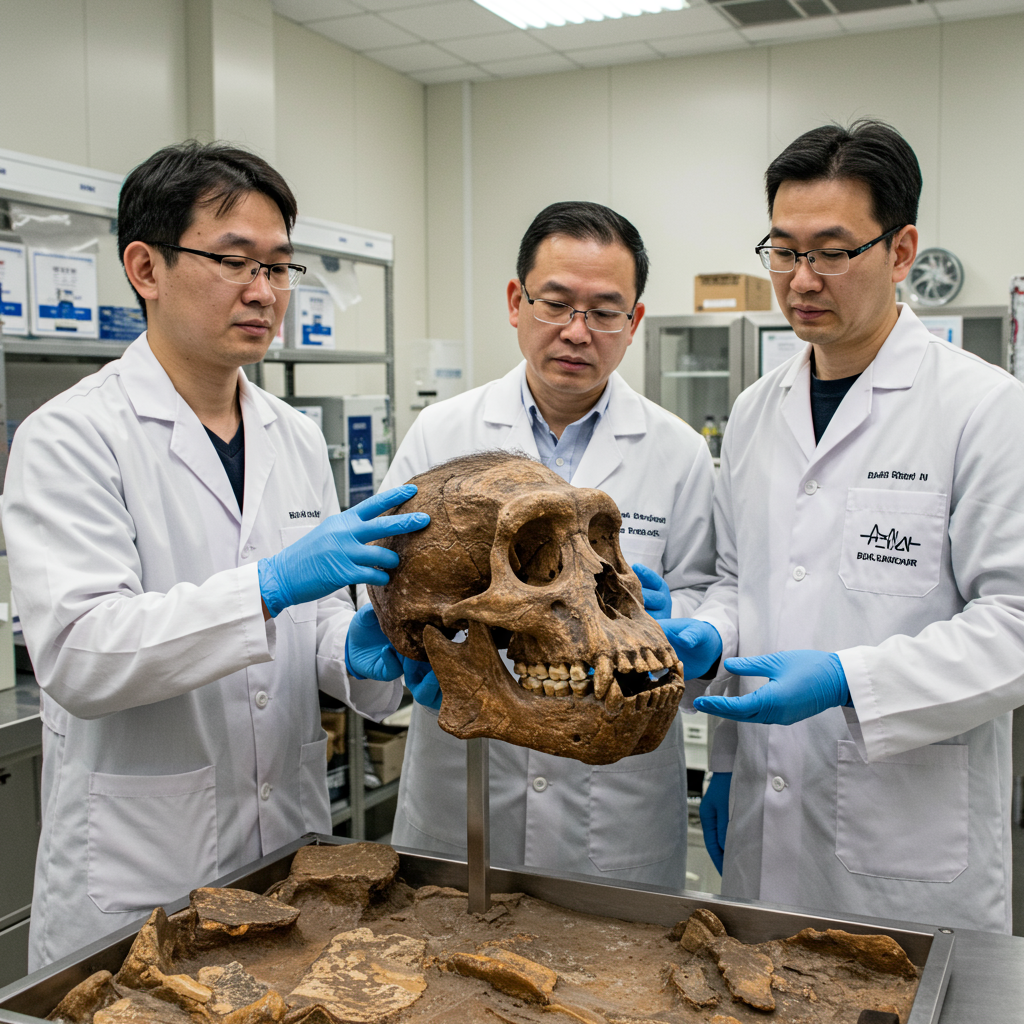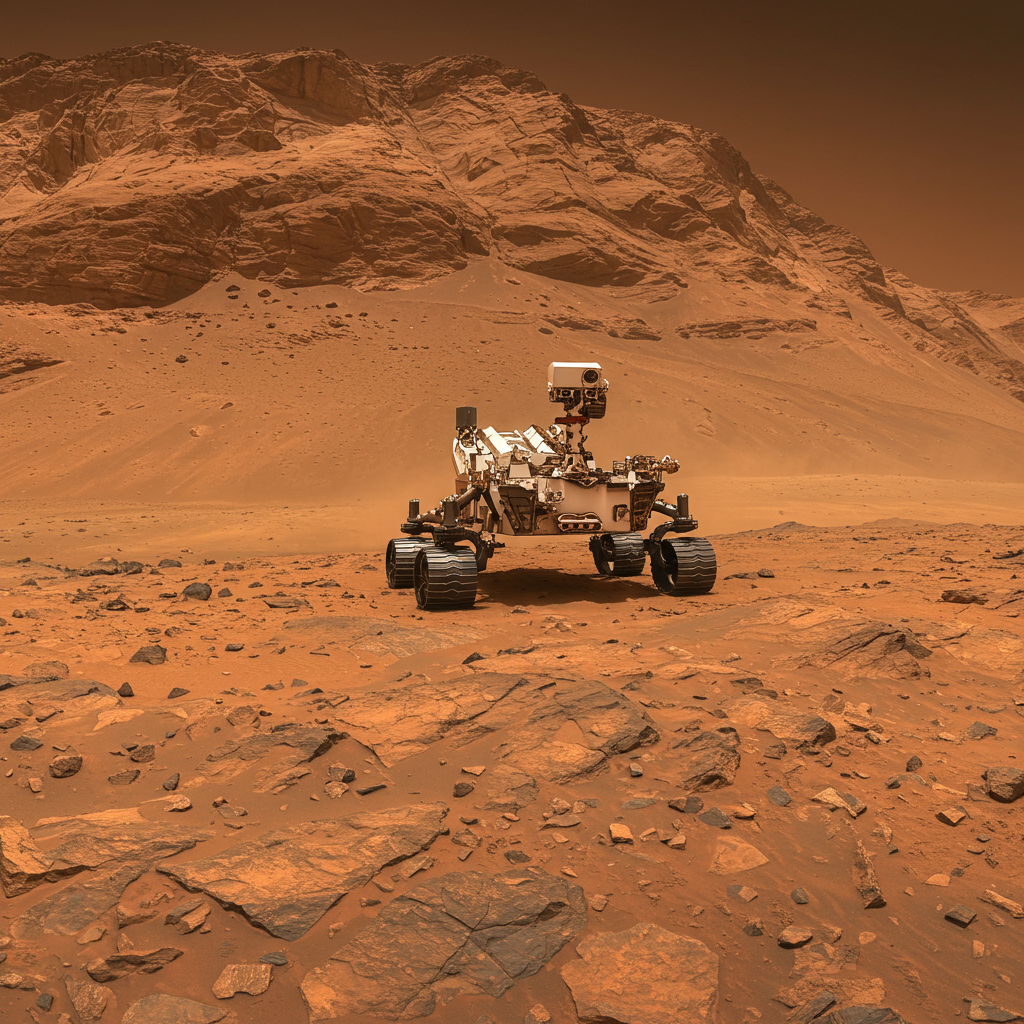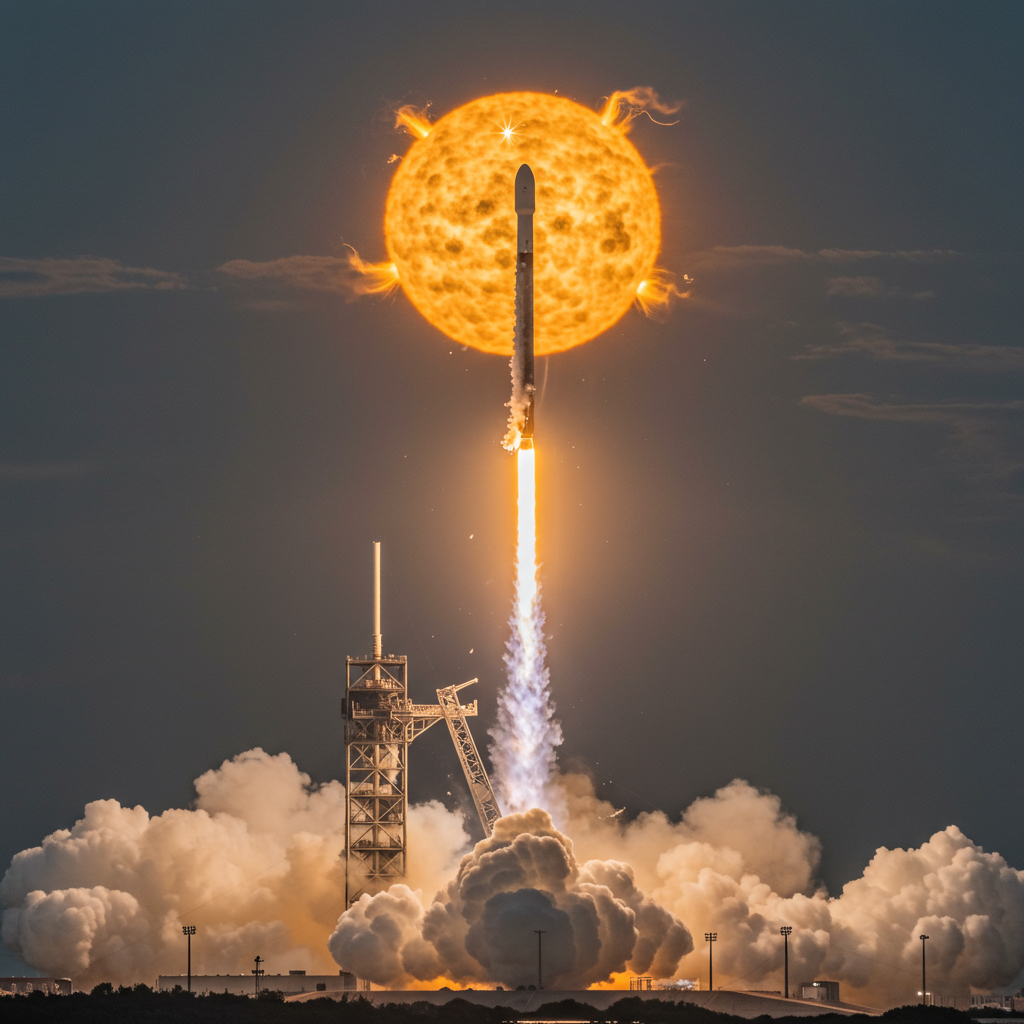The sun, our life-giving star, also harbors a powerful and often unseen threat: space weather. From erupting solar flares to immense coronal mass ejections (CMEs), these solar events can unleash streams of charged particles and radiation that race towards Earth, capable of disrupting our modern, technology-dependent lives. After decades of relying on aging spacecraft, a critical new sentinel is launching to protect our planet. On September 23, the U.S. National Oceanic and Atmospheric Administration (NOAA) will deploy the Space Weather Follow-On L1 (SWFO-L1) satellite, a purpose-built eye on the sun, designed to provide vital early warnings against these celestial hazards. This launch marks an urgent and significant step in safeguarding everything from GPS navigation and communication networks to power grids and astronauts in deep space.
The Unseen Threat: Why Space Weather Matters
Solar storms are far more than just spectacular auroral displays. When the sun launches massive eruptions of charged particles, known as coronal mass ejections (CMEs), they hurtle across space and collide with Earth’s magnetic field. These events can have profound and detrimental impacts on our infrastructure and daily routines. GPS signals can be disturbed, threatening accurate navigation for everything from aviation to ride-sharing apps. Communication satellites, critical for global connectivity, are vulnerable to damage. Astronauts operating beyond Earth’s protective magnetosphere face significant radiation risks. In extreme scenarios, powerful CMEs can even induce currents in power grids on the ground, leading to widespread outages. Protecting against these disturbances requires advanced warning, a capability that has been increasingly precarious.
A Fleet on the Brink: Our Aging Solar Sentinels
For decades, Earth has depended on a handful of dedicated satellites, strategically positioned far from our planet, to serve as our primary space weather sentinels. However, this critical fleet has been “hanging on by a thread,” according to experts. Many of these workhorses are operating well beyond their design lives, a testament to their engineers but a growing concern for global preparedness.
Consider these vital missions:
NASA’s Advanced Composition Explorer (ACE): Launched in 1997 with an intended five-year lifespan, ACE has been tirelessly working for nearly three decades. It currently serves as a primary source of solar wind data due to issues with newer systems.
NOAA’s Deep Space Climate Observatory (DSCOVR): Launched in 2015, DSCOVR was meant to succeed ACE. However, it has “struggled with reliability” and has been offline since July 2025 due to a software anomaly. There is currently “no timeline for restoration of data flow,” highlighting the fragility of our current system.
ESA/NASA’s Solar and Heliospheric Observatory (SOHO): A research mission from 1995, SOHO continues to provide useful solar imagery and data long past its planned retirement in 1998.
This reliance on decades-old technology has prompted urgent calls for replacement. Richard Ullman, deputy director of the NOAA Office of Space Weather Observations, emphasized during a media briefing that “The need is urgent, and we must replace this capability now.” The potential failure of any of these unreplaced missions could leave Earth dangerously exposed.
Lagrange Point 1: Earth’s First Line of Defense
The key to early warning against space weather lies in a unique gravitational sweet spot known as Lagrange Point 1 (L1). Situated approximately 1 million miles (1.6 million kilometers) between Earth and the sun, L1 offers satellites an uninterrupted, front-row view of the complex solar environment. From this strategic lookout, satellites can continuously monitor the solar wind, magnetic fields, and charged particles streaming from the sun.
By measuring critical parameters like solar wind speed, density, and magnetic orientation, these L1-based satellites provide Earth with a crucial window of preparation. This early detection offers anywhere from 15 minutes to an hour of warning before a solar storm’s effects reach our planet. Irene Parker, performing the duties of assistant administrator for NOAA Satellites, underscored this importance, stating, “These warnings are the first line of defense against the potentially devastating effects of space weather.” This vital lead time allows operators of critical infrastructure to take protective measures, mitigating potential damage and disruption.
Introducing SWFO-L1: NOAA’s Dedicated Space Weather Watchdog
The upcoming launch of NOAA’s Space Weather Follow-On L1 (SWFO-L1) satellite is designed to rectify the vulnerabilities of our current monitoring system. Its primary mission is to ensure continuous, uninterrupted, real-time solar wind monitoring. This capability is especially crucial given the unreliability of DSCOVR and the advanced age of ACE.
Once positioned at L1, SWFO-L1 will:
Measure the solar wind’s speed, density, and magnetic field orientation.
Monitor high-energy particles emanating from the sun.
Utilize two compact coronagraphs (CCORs) to image the sun’s corona, observing CMEs directly.
These critical measurements will be transmitted in real-time to NOAA’s Space Weather Prediction Center (SWPC) in Boulder, Colorado. Here, expert forecasters analyze the data and issue timely alerts and warnings to a wide array of users, including airlines, power grid operators, and satellite communication providers. Shawn Dahl, a forecaster at SWPC, expressed immense eagerness, calling SWFO-L1 “a giant leap forward to our forecast of decision support services.”
Unlike some scientific missions focused on discovery, SWFO-L1’s primary emphasis is operational reliability. Its core purpose is to guarantee a consistent flow of data, feeding essential information into space weather models to ensure our planet remains protected. As Parker noted, while it “can’t stop an incoming threat, but it can give us time to prepare.”
A Coordinated Effort: Protecting the Future of Space Exploration
The September 23 launch is more than just a single satellite; it represents a multi-pronged approach to understanding and mitigating solar threats. SWFO-L1 will launch alongside two other significant missions, all bound for the L1 Lagrange point:
NASA’s Interstellar Mapping and Acceleration Probe (IMAP): This primary spacecraft will map the heliosphere’s outer boundary, measuring solar wind, interstellar dust, and charged particles. IMAP will also contribute to continuous solar weather monitoring.
NASA’s Carruthers Geocorona Observatory (formerly GLIDE): This observatory will study Earth’s exosphere, a thin atmospheric layer that impacts our planet’s response to geomagnetic storms.
This coordinated deployment of three spacecraft to L1 will provide an unprecedentedly comprehensive view of the sun-Earth environment. For human spaceflight, particularly NASA’s ambitious Artemis missions aimed at returning astronauts to the Moon and beyond, these enhanced warnings are paramount. Astronauts traveling beyond low Earth orbit lack the significant protection of Earth’s magnetosphere, making early detection of dangerous radiation storms absolutely vital for their safety. Nicky Fox, associate administrator of NASA’s Science Mission Directorate, highlighted that IMAP will provide “unprecedentedly fast warnings” for these upcoming missions.
The Broader Context: Safeguarding a Crowded Orbit
The launch of SWFO-L1 takes place during an “incredibly dynamic era” in space, often described as a “new space race.” The past few years have seen an unprecedented surge in satellite deployments, with mega-constellations like SpaceX’s Starlink rapidly expanding. With nearly 8,400 active Starlink satellites and plans for many more, Earth’s orbit is becoming increasingly crowded. This burgeoning space economy and vital infrastructure are directly exposed to the sun’s fury.
Beyond natural space weather, the geopolitical landscape in orbit is also intensifying. There’s a “significant spike in hostile activity,” with concerns about jamming, laser dazzling, and cyberattacks on satellites. In this complex and contested environment, ensuring the resilience of critical space assets, including those monitoring space weather, becomes a matter of national and global security. SWFO-L1, therefore, isn’t just replacing an old system; it’s fortifying a foundational layer of defense for a future that increasingly relies on the reliable functioning of space-based technologies. This mission is about building a more resilient future, ensuring the technologies we depend on are protected from both natural and man-made threats in the cosmos.
Building a Resilient Future
The September 23 launch marks the start of a new chapter in space weather preparedness. By providing continuous, reliable monitoring of the sun, NOAA’s SWFO-L1 satellite will empower forecasters with the advanced tools needed to protect our country’s critical systems. This isn’t merely about launching a new piece of hardware; it’s an investment in a more secure and resilient future for everyone. Whether it’s ensuring reliable GPS navigation, stable power grids, or the safety of astronauts exploring new frontiers, keeping a watchful eye on the sun remains essential.
Frequently Asked Questions
What is the primary purpose of NOAA’s new SWFO-L1 satellite?
The primary purpose of NOAA’s Space Weather Follow-On L1 (SWFO-L1) satellite is to provide continuous, real-time monitoring of the sun’s activity, specifically the solar wind, magnetic fields, and high-energy particles. This mission is urgently needed to replace an aging and increasingly unreliable fleet of existing space weather satellites, ensuring critical early warnings of solar storms (coronal mass ejections, or CMEs) are sent to Earth. Its focus is operational reliability, directly supporting forecasters at NOAA’s Space Weather Prediction Center.
Where will the SWFO-L1 satellite be positioned, and why is this location crucial?
The SWFO-L1 satellite will be positioned at Lagrange Point 1 (L1), approximately 1 million miles (1.6 million kilometers) between Earth and the sun. This location is crucial because it provides an uninterrupted, “front-row seat” view of the sun. From L1, SWFO-L1 can detect solar events like CMEs and measure the solar wind before they impact Earth. This strategic vantage point allows it to provide vital early warnings, ranging from 15 minutes to an hour, enabling protective measures for Earth’s infrastructure.
How do solar storms impact daily life and what warnings does SWFO-L1 provide?
Solar storms, particularly coronal mass ejections (CMEs), can significantly impact daily life by disturbing GPS signals, threatening astronauts, damaging communication satellites, and in extreme cases, causing power grid outages on Earth. SWFO-L1 will measure critical solar wind parameters and image the sun’s corona to predict these events. The warnings it provides give operators of critical systems, such as airlines and utility companies, valuable time to prepare and mitigate potential damage, protecting essential technologies and ensuring public safety.




